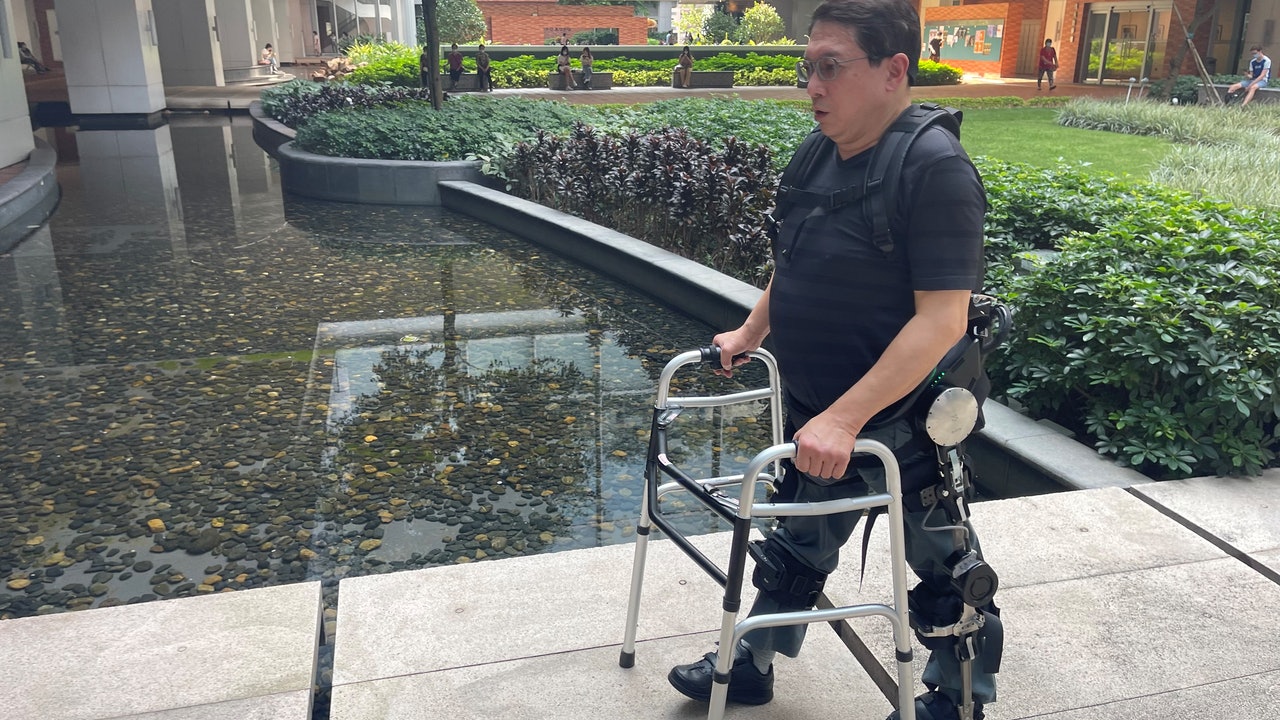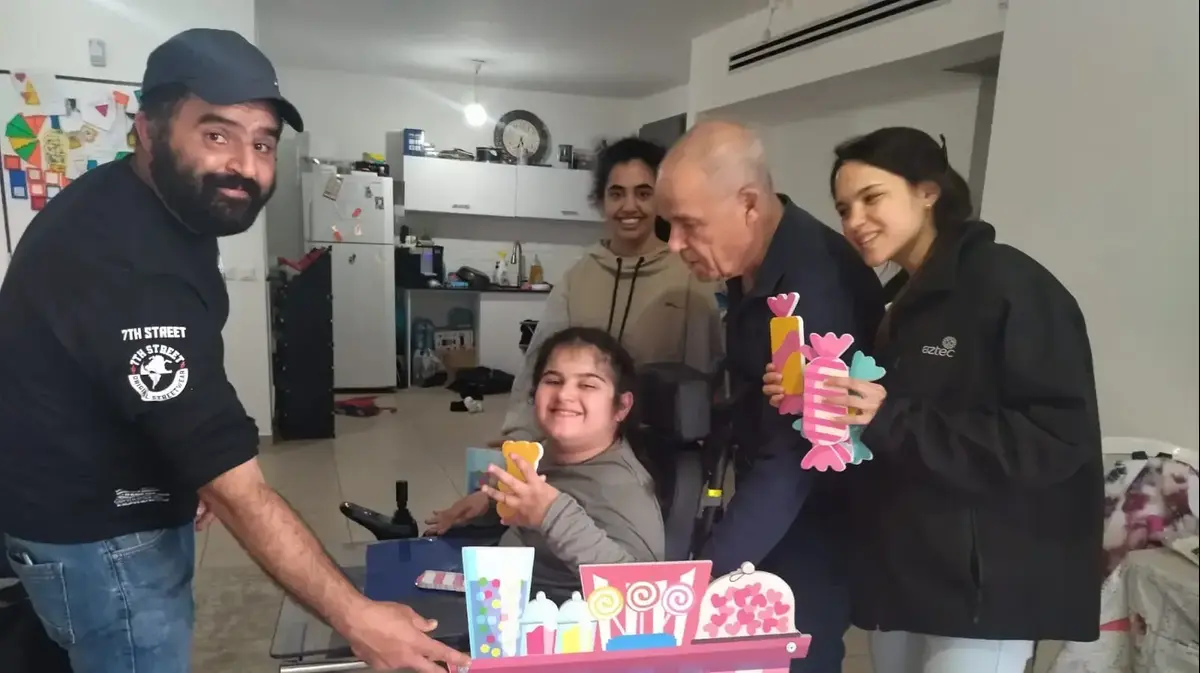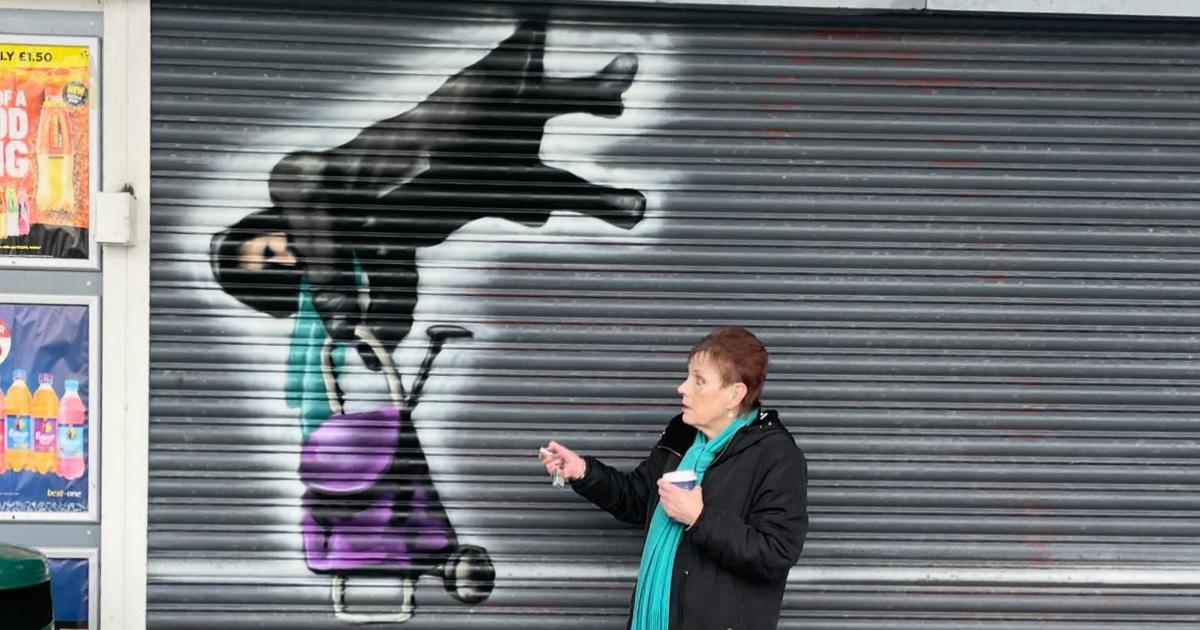In recent years, Hong Kong has been committed to research and development and the introduction of new technologies to assist the disabled.
In the past, patients with spinal cord injury could only rely on traditional stents to assist in rehabilitation training, and the patients would be more strenuous and prone to fatigue, and the effect was not satisfactory.
The University of Hong Kong introduced the “mechanical foot” in 2018 to provide patients with new training methods to assist the disabled in walking.
Some beneficiary patients said that they had forgotten the feeling of standing due to injuries for a period of time.
After using the mechanical foot for the first time, it relearns to walk like a baby.
Although he feels very tired, he has been able to walk for half an hour with the aid of the machine after insisting on training. He is very encouraged. He hopes that the mechanical foot can be popularized and benefit more people in need.
The Department of Orthopedics and Trauma Surgery, Faculty of Medicine, The University of Hong Kong has been committed to promoting the application of mechanical feet, and will be the first to introduce it to Hong Kong in 2018 to assist patients with a series of rehabilitation training.
(Photo by Zeng Fengting)
The Department of Orthopedics and Trauma Surgery, Faculty of Medicine, The University of Hong Kong has been committed to promoting the application of mechanical feet, and was the first to introduce it to Hong Kong in 2018 to assist patients with a series of rehabilitation training.
The causes of spinal cord nerve injury are mainly divided into trauma and disease. Spinal cord nerve injury caused by trauma increases by an average of about 200 patients each year.
Since spinal cord nerve injury involves complex rehabilitation treatment, it will also affect the functions of various parts of the body, such as intestinal peristalsis, muscles and autonomic nerves. Therefore, rehabilitation training is very important.
The Honorary Clinical Assistant Professor Gao Rilan of the Department of Orthopedics and Traumatology of the Faculty of Medicine of the University of Hong Kong said that mechanical feet are mainly used by patients with spinal cord injuries and those with mobility impairments, such as strokes and cerebral palsy. However, if there is osteoporosis, excessive muscle tone and excessive muscle tension, It is not applicable to those with muscle atrophy.
(Photo by Zeng Fengting)
The Honorary Clinical Assistant Professor Gao Rilan of the Department of Orthopedics and Traumatology of the University of Hong Kong Faculty of Medicine said that the mechanical feet introduced by the Faculty of Medicine of the University of Hong Kong have served 1,000 people in the past two years, including for treatment training, research projects and community services.
The mechanical foot is mainly used for patients with spinal cord injury and any people with mobility impairments, such as stroke and cerebral palsy. However, it is not applicable if there is osteoporosis, excessive muscle tone and excessive muscle atrophy.
Gao Rilan reminded that patients need to let the doctor make a judgment before using the mechanical foot. He also mentioned that the doctor will use different modes for relevant training depending on the patient's condition.
Lin Chuxian, the clinical associate professor of the Department of Orthopedics and Traumatology at the Faculty of Medicine of the University of Hong Kong, pointed out that mechanical feet are more effective for some postoperative patients. For example, they can help them to get up again faster. After training, they can also reduce osteoporosis, joint tightness, and excessive muscle tension. The situation arises.
(Photo by Zeng Fengting)
The effect of mechanical feet is better than traditional brackets
Lin Chuxian, the clinical associate professor of the Department of Orthopedics and Traumatology of the Faculty of Medicine of the University of Hong Kong, mentioned the difference between traditional stents and mechanical feet.
He explained that in the past, patients using traditional stents would be more strenuous and have certain physical requirements; while mechanical feet can assist in assisting patients in repeating the same movement, even the smallest details of the joints will be taken into account, so that their legs With proper training of the muscles, the patient's exercise volume will also be greater.
Lin Chuxian pointed out that mechanical feet are more effective for some postoperative patients. For example, it can help them to stand up faster, and can reduce osteoporosis, joint tightness, and excessive muscle tension after training.
The mechanical foot is like a heart-strength shot for the patient, "He can get up, and if he trains for a long time, he will be in a good mood and it will be helpful to the treatment."
Yan Chubi, who used to have mobility problems due to traffic accidents in the past, was one of the patients who used mechanical feet to rehabilitate. She said that in the past, traditional stents were used for rehabilitation training, but the confidence has been low.
Yan Chubi explained that because the autonomic nervous system twitches from time to time, her training with the stent is not satisfactory.
In addition, the brace training relies on the support of the upper limbs, which also makes her feel tired easily and cannot train for a long time.
She believes that the use of mechanical feet can give the legs a sufficient amount of exercise, which is different from the previous concentrated use of upper limb support.
Beneficiaries say mechanical feet help restore dignity
Another patient benefiting from mechanical feet is Li Xiangjiang.
He was affected by polio when he was 4 years old, resulting in poor mobility and stronger upper limbs.
However, a traffic accident a few years ago made him completely immobile.
At that time, the doctor told him that he had a chance to get better within 8 months, but his muscles declined rapidly during the period, which made it difficult for him to walk.
Fortunately, with the help of mechanical feet, he was able to stand and even walk again, "I felt like I was not injured at the time, and I could stand up and lean and stabilize again."
He confessed that the mechanical feet helped him regain his dignity and gave him a clearer direction for future treatment.
Li Zhiwei, known as the King of Baoshan, was an early group of users of mechanical feet. He said that after climbing the Lion Rock, his next goal was to learn to stand again. Driven by this goal, he tried to use mechanical feet.
Li Zhiwei described that because he had forgotten how to stand at the beginning, he felt like a baby and needed to learn and adapt again.
After training for a period of time, he is now able to walk for half an hour with the aid of a machine. "Actually, there are a lot of things, but it can be used as exercise. It is better than getting out of the bed and sitting in a wheelchair, and climbing back to bed without a wheelchair. A choice is a good thing."
He revealed that after completing the relevant courses of the mechanical feet and obtaining the license, he will bring the mechanical feet to the home at his own expense, hoping to use the mechanical feet for daily and household applications.
Li Zhiwei said with a smile: "You may see me later on the beach with a mechanical foot."
Ding Haixiang, the first person to try mechanical feet in Hong Kong, is very grateful for the efforts of doctors and nurses.
He recalled that using the mechanical foot for the first time made him re-experience the feeling of standing up and walking, and he was very excited.
Ding Haixiang also witnessed the doctor’s efforts to test and adjust the mechanical feet. "At that time, the air-conditioning was turned on to the maximum in the face, but the doctors all tried to sweat. The mechanical feet were out of control. Several nurses supported me. , Don’t I fall to it.”
Zhang Wenzhi, chair professor and chair professor of the Department of Orthopedics and Traumatology of the Faculty of Medicine of the University of Hong Kong, and Professor of the Ho Fung Yuet Yan Foundation (spine surgery), hopes to promote the popularization of mechanical feet and bring them into the community.
(Photo by Zeng Fengting)
Professor Zhang Wenzhi, chair professor of the Department of Orthopedics and Traumatology, Hong Kong University School of Medicine, and Professor of the Ho Fung Yuet Yan Foundation (Spine Surgery), said that there are different types and functions of mechanical feet, such as daily training and assisting activities under intelligent systems, requiring doctors. With assistance.
He hopes to promote the popularization of mechanical feet in the future, so that mechanical feet can enter the community and help more people in need.
In addition, he mentioned that the current team is working hard to optimize and develop a mechanical foot that is more suitable for Hong Kong people and can be used at home. Although the development process is long, he hopes to design a lighter and more suitable mechanical foot that fits the terrain of Hong Kong. People benefit.
The Department of Orthopaedics and Traumatology of the University of Hong Kong will hold the "Mechanical Foot Relay Race" on Saturday (16th), which lasts about one hour.
The activity will involve 4 disabled people using mechanical feet to walk in 4 different locations. It is hoped that this will allow the mechanical feet to enter the community to arouse social attention and raise funds to help more fellow travellers.
The event will also be broadcast live on its Facebook page.
Start-up company develops home-use rehabilitation manipulators to help stroke patients sit back home under the epidemic policy address | No mention of employment measures for persons with disabilities: Association for the Blind: Very disappointed that Kwun Tong plans to set up a lift area on the footbridge connecting the two housing estates Members are worried about the ups and downs of the healthy
01Community



/cloudfront-eu-central-1.images.arcpublishing.com/prisa/JA2J3ADSLZGFTJI5KRKI6PWXUU.jpg)










